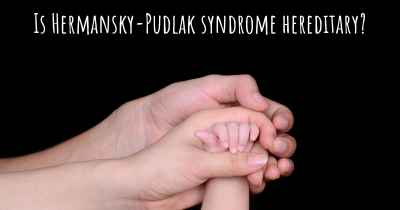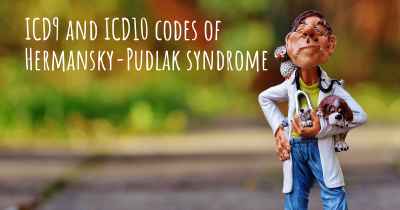What is the history of Hermansky-Pudlak syndrome?
When was Hermansky-Pudlak syndrome discovered? What is the story of this discovery? Was it coincidence or not?

Hermansky-Pudlak syndrome (HPS) is a rare genetic disorder that was first described by two Czechoslovakian physicians, Dr. Hermansky and Dr. Pudlak, in the 1950s. It is characterized by a combination of symptoms including albinism, bleeding disorders, and various other health complications.
The history of Hermansky-Pudlak syndrome dates back to the mid-20th century when Dr. Hermansky and Dr. Pudlak independently encountered patients with similar clinical features. Dr. Hermansky, an internist, observed a group of individuals in Czechoslovakia who exhibited albinism, visual impairment, and prolonged bleeding tendencies. Around the same time, Dr. Pudlak, a dermatologist, encountered patients with similar symptoms in the same region.
Recognizing the similarities in their cases, Dr. Hermansky and Dr. Pudlak collaborated to investigate further. They conducted extensive clinical examinations and laboratory tests on affected individuals and their families. Their research revealed a consistent pattern of symptoms, suggesting a distinct syndrome.
In 1959, Dr. Hermansky and Dr. Pudlak published their findings, describing the syndrome as a unique disorder characterized by albinism, bleeding diathesis, and other systemic complications. They proposed that the condition was inherited in an autosomal recessive manner, meaning that both parents must carry a copy of the mutated gene for their child to be affected.
Over the following decades, additional cases of Hermansky-Pudlak syndrome were reported worldwide, contributing to a better understanding of the disorder. Researchers discovered that HPS is not limited to a specific ethnic group or geographical region, although certain populations, such as Puerto Ricans and individuals of Puerto Rican descent, have a higher prevalence of the syndrome.
In the 1990s, advancements in genetic research allowed scientists to identify the specific genes associated with Hermansky-Pudlak syndrome. Mutations in at least 10 different genes have been linked to the various subtypes of HPS. These genes are involved in the formation and function of specialized cell structures called lysosomes and related organelles.
One of the most significant breakthroughs in understanding HPS came in 1999 when researchers discovered that mutations in the HPS1 gene were responsible for the most common subtype of the syndrome, known as HPS-1. This finding paved the way for improved diagnostic methods and genetic counseling for affected individuals and their families.
Since then, research on Hermansky-Pudlak syndrome has expanded, leading to the identification of additional genes associated with different subtypes of the disorder. Scientists have also made progress in elucidating the underlying cellular and molecular mechanisms that contribute to the various symptoms of HPS.
Today, Hermansky-Pudlak syndrome remains a rare and complex disorder with no known cure. However, advancements in medical management and supportive care have significantly improved the quality of life for individuals with HPS. Ongoing research continues to deepen our understanding of the syndrome, with the ultimate goal of developing targeted therapies and interventions.








